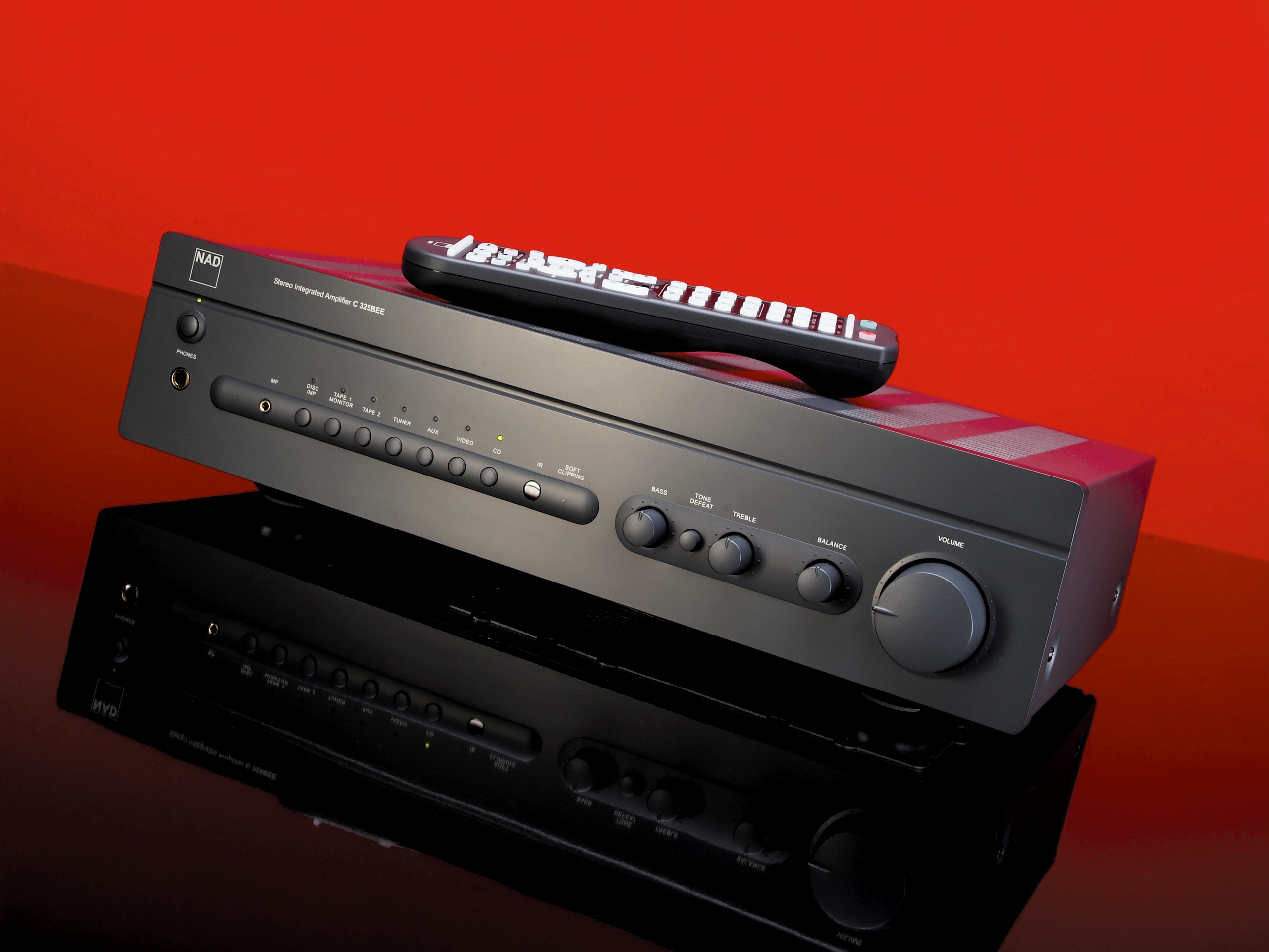TechRadar Verdict
Clearly this is the amplifier to go for if you adore high-grade bass in your system
Pros
- +
Sound is lively and immediate
- +
Bass is impressively out-of-class
Cons
- -
Upper frequencies lack a little precision and sophistication
- -
Sound can become wearing with time
Why you can trust TechRadar
NAD is proud of its designer, Bjorn Erik Edvardsen. So proud, his initials adorn the amplifiers he designs. Justifiably proud? He certainly did the business on the C320BEE, one of the best-loved budget amplifiers ever. But how will his input on its replacement - the C325BEE - stack up?
At the very least, he's packed a lot of components into a neat and attractively priced box. The majority of the amplification is carried out by discrete components and NAD has incorporated a couple of little modules into each channel.
These are matchbox-size boards, densely populated with components and just one of many clues to cost-conscious thinking under the lid. Others include the use of cheaper passive components. The savings allowing for the use of a decent toroidal transformer with a metal screen, unusually large reservoir capacitors and an above average motorised potentiometer for the volume control.
The basic specification is pretty typical, with seven line-level inputs including two 'tape' loops, external linking of preamp and power sections and defeatable tone controls. There's also a thoughtful extra socket mounted on the front panel, for portable music devices.
Conservative quoting
NAD's ever-present 'Soft clipping' is included, too. NAD quotes a continuous output power of 50 watts, which is really conservative: we obtained a value of very nearly 80 watts with short-term peaks in excess of 100 watts, so it's hardly gutless.
Within that nominal 50 watt envelope, distortion is held very low, barely exceeding 0.01 per cent at high frequencies, less than half that in the midband and vanishing altogether below a couple of watts output.
We've found some evidence of a 'house sound' among recent NAD amps, with a lively but not always amazingly sophisticated presentation. On the whole, this model fits that bill, but there are some notable specifics. First of all, we must congratulate NAD on a remarkably fine bass performance, well beyond normal expectations of a £250 amplifier.
Not only does the bass extend convincingly into the seismic reaches, it has a combination of tunefulness and attack that is seriously reminiscent of high-end amplification. The only budget giveaway is a slight lack of control at times.
Classy bass
But even here the C325BEE gives little or no leeway to any other competing amp we can think of. Classy bass like this is of obvious benefit to bass-rich music, but in many ways is even more useful with classical, jazz and generally mellower tones. Such music often relies in less overt ways on the bass, but really appreciates confident underpinning.
The midrange and treble are not quite so starry. There's a little midrange coloration, a slight 'quack' that occasionally becomes audible on instruments like sax or trumpet, while the treble is not as open and clear as its best rivals can manage.
All the same, it is well extended, has good detail to it, and stereo imaging is quite impressively precise laterally, if sometimes rather vague in terms of depth.
Although intensive listening can become wearing, it's impressive with high-octane music. Horses for courses, then, but there's plenty in the C325BEE's favour and we do advise giving it a listen if you can. Richard Black
Tech.co.uk was the former name of TechRadar.com. Its staff were at the forefront of the digital publishing revolution, and spearheaded the move to bring consumer technology journalism to its natural home – online. Many of the current TechRadar staff started life a Tech.co.uk staff writer, covering everything from the emerging smartphone market to the evolving market of personal computers. Think of it as the building blocks of the TechRadar you love today.
